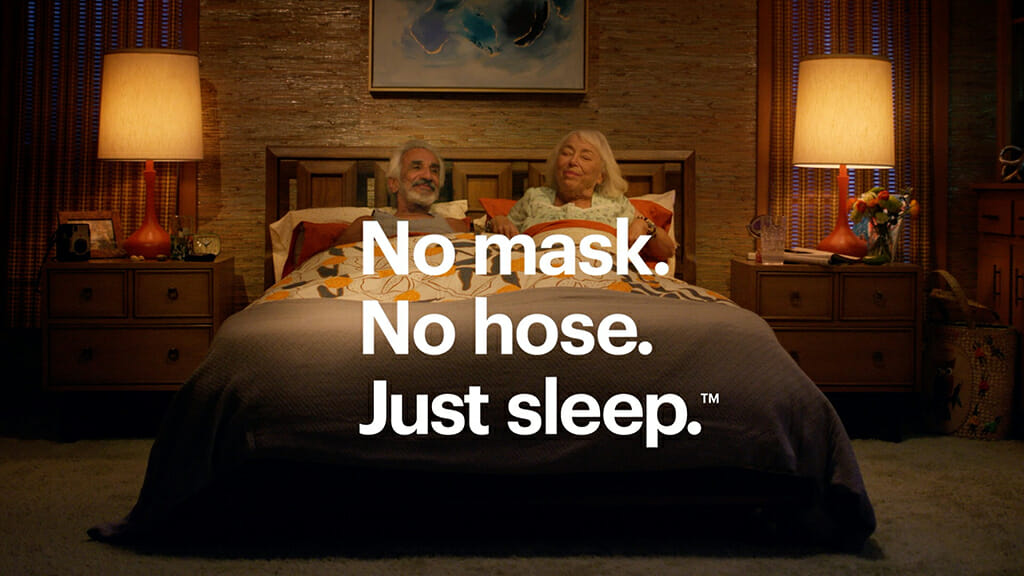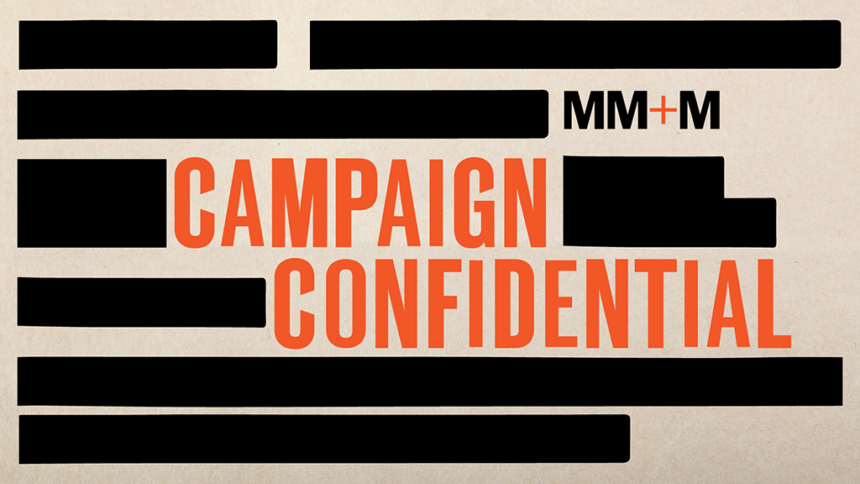When people think about sleep apnea, it may not immediately elicit laughs but rather a sense of empathy. After all, losing sleep is a conundrum most people face in their lives, but for those with sleep apnea, it’s a regular occurrence that can have a detrimental impact on a person’s health.
“With any good marketing, I don’t care what category you’re in, if you don’t have a deep empathy for your target consumer, you’re not going to do good work,” says Martin Abrams, VP of marketing and customer experience at Inspire Medical Systems.
With the empathy that came from hours of listening to sleep apnea patients, Inspire ultimately decided to trade in tears for laughs in its latest campaign. The effort utilizes actors who don’t fit the typical shiny, happy stereotype that characterizes much advertising in the pharmaceutical space.
Inspire’s two 30-second spots, titled Tattoo and Twins, keep it light.
In the former ad, there’s some friendly banter between an older couple getting ready for bed, while in the latter, a pair of twins, both with sleep apnea, opt for different solutions. One chooses a continuous positive airway pressure machine (CPAP), while the other goes with the Inspire system.
CPAP machines have long been the “gold standard” for sleep apnea treatment, to borrow a phrase from an article penned by the Yale School of Medicine. However, it is not the only option for treating the condition.
Inspire therapy, a neurostimulation system for the treatment of obstructive sleep apnea (OSA), was approved by the Food and Drug Administration in 2014. The tagline for the ads, “No mask. No hose. Just sleep,” alludes to common complaints about CPAP systems.
“We know, from various sources, that roughly half of people prescribed CPAP will stop using it over the next two to three years,” Abrams says. “What we always say is if CPAP is working for you, please use it and take care of your health. But if it’s not, our company exists to give you another option.”
As the relatively new player and the alternative option, Inspire wanted to use the campaign to address the hesitation on the part of some patients.
“There’s this fear of trying something new, of breaking a habit,” says Paula Maki, executive creative director at space150, which produced the ad. “How do you combat fear? There’s the route with sadness and over-sincerity. There’s the route where you list cold product features. However, humor is empathy and it’s the truth. If you can laugh or even say, ‘That’s me,’ you are relating to something that millions of people have in common.”
For Maki, the choice of actors in the spots is also essential to their effectiveness.

“As with any work of art or story, it’s much more effective if you can see yourself and your experience on screen. [These ads] stand out in the sea of sameness, of guys in soft focus tossing footballs in their yards,” she says.
The national advertising campaign is Inspire Sleep’s first marketing effort on this scale, with previous ones largely confined to a “geo-targeted market-by-market approach” in Abrams’s words. The spots will appear on a number of cable stations with an emphasis on news and sports programming, popular with many in the Inspire target audience.
While the spots may produce a chuckle, Abrams and Maki hope they will lead people to the company’s website, which is filled with educational materials, while also promoting a discussion about sleep apnea options with their physicians.
“You have to remember what our advertising is doing,” Abrams concludes. “I’m going to quote something from one of our sales leaders, ‘It’s shaking the trees of people that have given up and we are giving them hope with another option.’”







